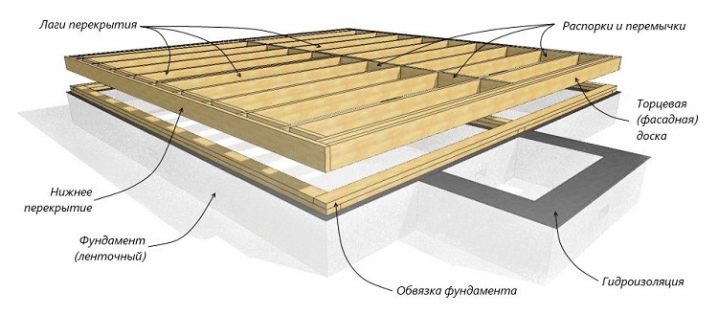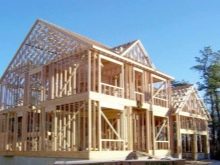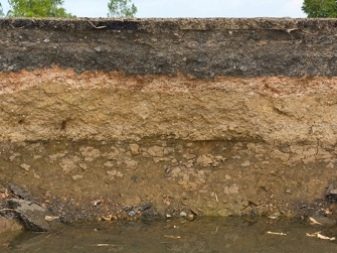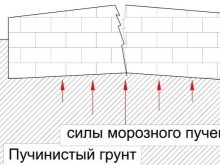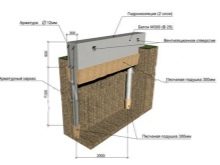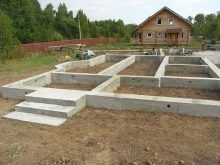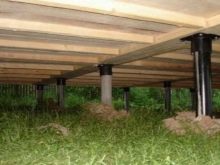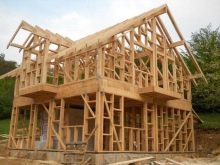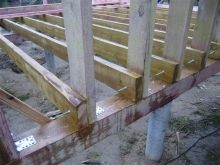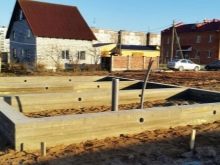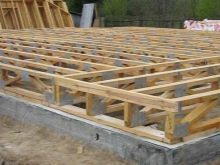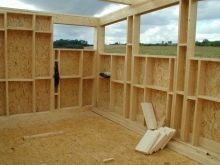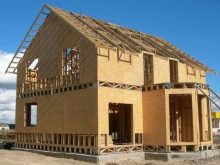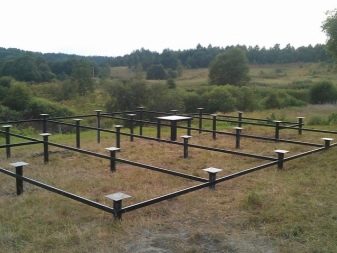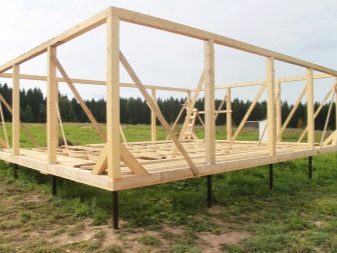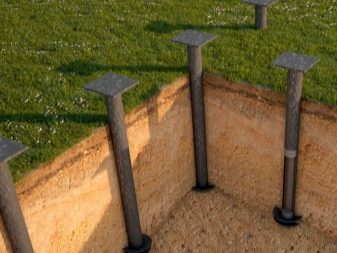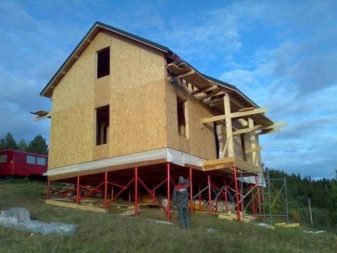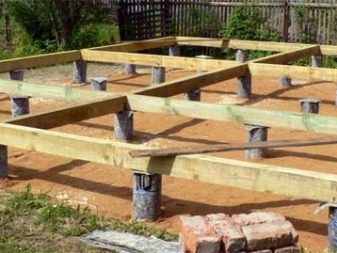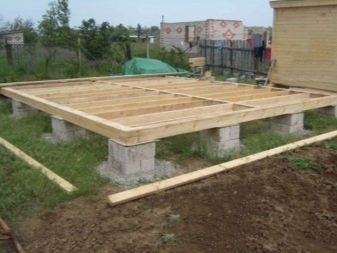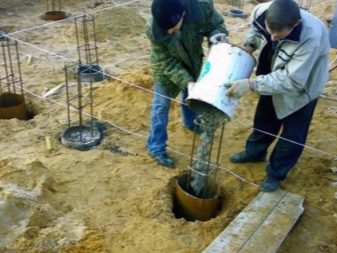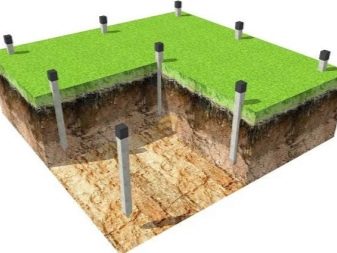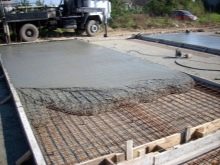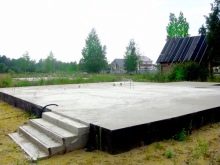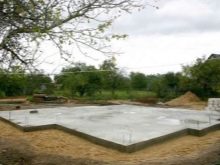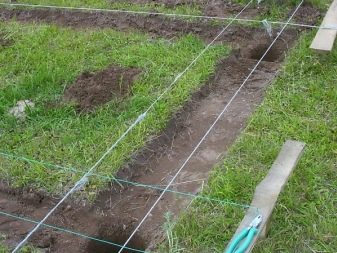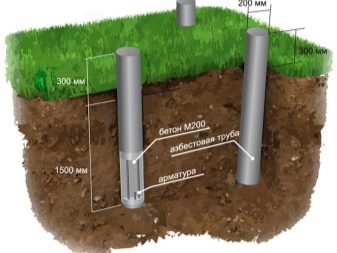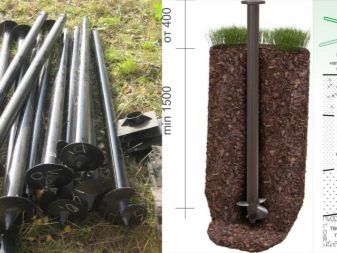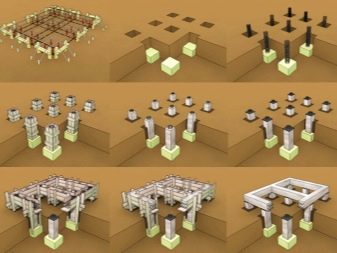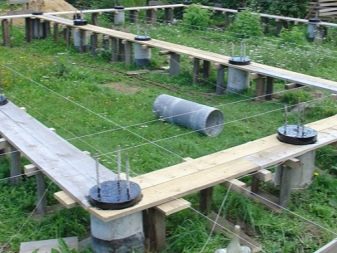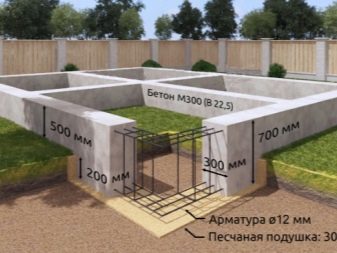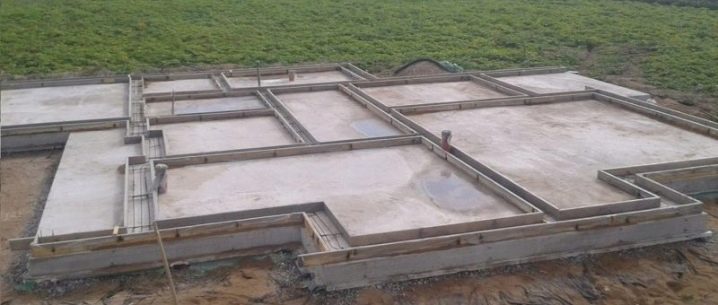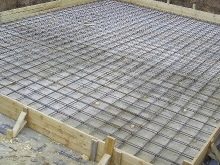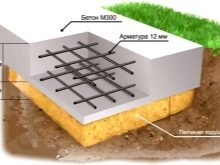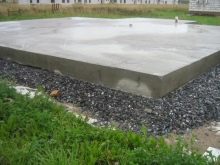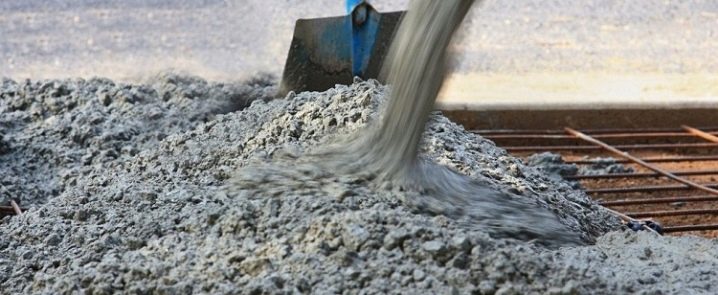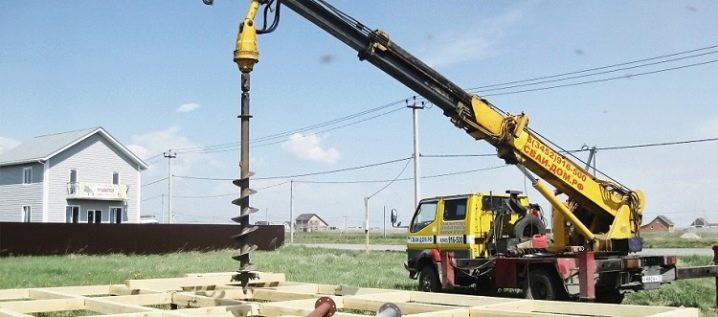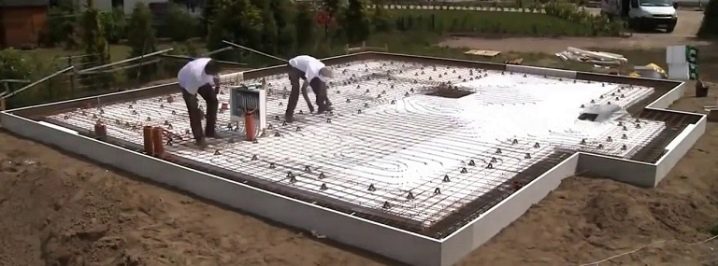Step-by-step instructions for the construction of the foundation of a frame house
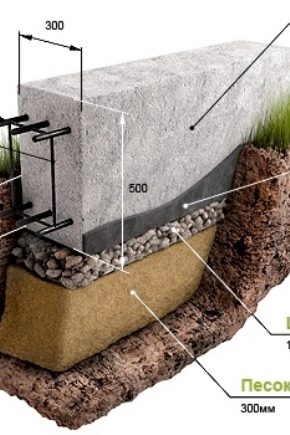
Frame houses should be built on strong and reliable grounds. For this you need to build a quality foundation. To carry out such work, it is not necessary to turn to the expensive services of specialists. Homeowners themselves can build a good and durable foundation. Today we will look at how to prepare the foundation for a frame house.
Special features
Frame house - a fairly light construction. Such structures can be built on almost any foundation. The main thing is to competently approach the preparation of such a foundation and use qualitymaterials that meet all requirements. In addition, it is very important to consider the type of soil and its features.
Homeowners can do the following:
- Order a well to take the soil, then send it to the laboratory for analysis. Based on the results found, engineers can carry out all the required calculations. As a result, you can build a very strong foundation "for centuries". If you decide to go this way, then you should know that it will break the bank.
- There is another method of constructing the foundation for a frame house. This method is based on the experience of neighbors living in the area, as well as on their own knowledge. This is the way most users are going to build a home.
A distinctive feature of the framework for the frame structure is its low cost. This is due to the fact that such buildings have a small weight, especially if we compare them with brick or block structures.
To select a specific type of foundation for a frame structure, you need to take into account a number of specific factors:
- the important role is played by the properties of the soil on which the arrangement of the foundation and the construction of the house is planned;
- need to take into account the presence of a basement area;
- the weight of the overall house structure is also important, which mainly depends on the materials from which it is planned to be built;
- proximity of groundwater, as well as an indicator of soil freezing.
Before embarking on the foundation of a frame house, it is important to determine the properties of the soil. To understand this issue, you can order geological surveys, but this, as mentioned above, will cost a lot. As a rule, people themselves determine the level of groundwater, their proximity, as well as the immediate composition of the soil. To do this, dig a hole (with a depth of about 1.5 m) and examine the cut of the soil.
So, sandy-stony, rocky or gravel foundations in which there is no clay, as well as large sandy soils without any inclusions are the ideal solution for arranging the foundation. These bases do not accumulate moisture, and when freezing does not swell.
Dusty and fine-grained lands are otherwise called heaving soils.Such grounds can not be called suitable for the construction of the foundation.
Soils with a high content of clay, next to which there are ground waters, are distinguished by the fact that they swell up in conditions of freezing.
Only after determining the type of soil, you can choose a specific type of foundation for a frame house. This feature must be taken into account, otherwise the building may not be the strongest and most durable.
The foundation should serve as much as the frame house itself. In this case, it is not necessary to construct a reinforced concrete base due to the low weight of the erection.
When selecting the appropriate type of foundation, it is important to consider not only the type of soil, but also the features of the frame house itself. Similar structures are erected from wooden bars or metal profile. The designs are complemented by various kinds of heaters, finishing, as well as hydro- and vapor-insulating coatings.
In a single ensemble, these components form a kind of "pie", which consists of:
- gypsum boards, which act as a finish, located in the inner part of the structure;
- special membranes that prevent the ingress of fumes into the ceiling;
- insulation, which can be a plate or roll cover;
- finishing material consisting of polymeric raw materials or wood (these components are responsible for sufficient rigidity of the structure);
- a protective layer of polyethylene, which does not allow moisture and wind to pass from the outside of the building;
- finishing layer (as the finishing layer most often are materials such as siding, tongue-and-groove coatings or plaster mixes).
Experts say that in case of finding in the territory of highly located groundwater to build a basement will not work. In such conditions, it does not matter at all what type of foundation you have chosen and how much quality waterproofing it has been provided for - any solution in the basement will have water on such a site.
It is recommended to build dwellings, on the base of which there is a monolithic foundation slab, on a floating and loose section. Such a component is indispensable in such conditions, since it provides the building with the necessary level of rigidity.
The weight of the “skeleton carcass” design mainly falls on supporting parts, lintels, struts and rafters. All other components can only give a secondary load, which mainly depends on the specific project of the house. All this has an impact on the selection of the foundation, as well as the location of its key nodes. It is also very important to take into account the data on the weight distribution of the components of the frame structure when preparing pile or columnar foundations.
There are several types of foundation. Each of them is built according to its technology. It is quite possible to engage in the preparation of such grounds on our own, without resorting to specialists. However, it is very important not to make mistakes. To do this, you must strictly follow the step by step instructions.
Kinds
To choose the appropriate type of foundation for a frame house, you need to familiarize yourself with the characteristics and features of all possible variants of these bases.
Tape
This type of foundation is most often chosen when building houses with a small number of floors. The popularity of such foundations is due to their affordable cost and fairly simple erection.Often strip foundations strengthened with piles. Such designs are also called pile-tape.
Ribbon foundation is divided into 2 types:
- Shallow-depth design has a shallow depth - no more than 70 cm. This foundation is located above the level of soil freezing. The base is formed during the construction of one-story buildings on the ground, which is subject to frost heaving.
- There is also a recessed strip foundation. Such a structure is addressed in the event that a basement is present in a frame housing. The depth of this basement can reach 1.2 m.
If you decide to build such a variant of the foundation under the "skeleton", then you should take into account that you need to build it carefully and accurately, not allowing the slightest mistake. If the execution of the base turns out to be of poor quality, then this can lead to adverse consequences.
As a rule, a tape version of the foundation is constructed if the house is planned to be equipped with a basement or a heated underground. The shallow base is perfect for a non-rocky soil.However, with a deep level of freezing it will be necessary either to dig a trench at a great depth, or to strengthen the foundation with pile structures installed below the level of freezing.
Pile screw
A sturdy base on screw piles is perfect for structures on the frame. It is being constructed on loose and unstable soils, as well as in areas that are characterized by a difficult topography and the nearest location of groundwater.
The main advantages of pile foundations are:
- the ability to carry out installation work without the involvement of special equipment;
- quick installation, which can take only one day;
- excellent bearing properties;
- resistance to soil freezing and groundwater effects;
- a wide range of dimensions and types, which makes it possible to choose the best option for different conditions;
- democratic price;
- possibility of erection in any season.
However, the pile-screw foundation has one serious drawback - with such a foundation it is impossible to build basements. This type of foundation is designed only for the construction of lightweight structures or compact extensions.
Columnar
This type of foundation is concrete pillars, set apart from each other. These elements are placed around the perimeter of the house, as well as at the intersection of walls located in the inner part of the building. The bottom of the pillars is the base, and the top is the tip. Consider one nuance: the heads should be in a clear horizontal position, since it is on them that the frame of the dwelling will be placed later. The height of these parts is usually equal to the height of the floor of the 1st floor (about 50-60 cm from the ground level).
Half of the supports that are located underground, mostly have a cross-section of a rounded shape. That half that is above the ground, as a rule, differs in square or rectangular section. For such a foundation it is necessary to prepare a well. For this you can use a simple garden drill. The frame construction for such erections is recommended to be made of a cut board.
The diameter of the excavation mainly depends on the severity of the structure, which will subsequently be located on the columnar base.
Pile area is usually small. For this reason, such a foundation should be built on reliable foundations - solid layers of soil that are lower than the level of freezing. As a rule, the depth of drilling for such structures is approximately 2 m.
Ground half of such bases are made of materials such as reinforced concrete, brick or wood. The most short-lived is the last option. Wooden poles do not last long, even if they are pre-treated with expensive protective impregnations. As for brick pillars, it can take a lot of time and effort to build them. It follows from this that the concrete column base is optimum.
Reinforced concrete guarantees a “long life” of the foundation, as well as maximum strength both in compression and in tension, which excludes its deformation in frosty conditions. It is possible to prepare the solution for the manufacture of such elements with your own hands, but this will require the use of high-quality concrete mixers.
Foundation structures may have a rectangle or cylinder section, and they can be not only constant, but also variables (that is, a broad base). For a variable base with pillars, much more ground work will have to be done, however, due to the expansion of the support area, the bearing capacity of the foundation structure also increases.
Monolithic
The solid and reliable is the monolithic base. It is a single monolithic slab of reinforced concrete. This base is located directly under the whole frame structure. This foundation is distinguished by its maximum bearing properties, especially when compared with other variants of the fundamentals. Due to such characteristics, a monolithic structure can provide reliable and stable support even to a heavy structure in conditions of heaving soil.
The thickness of reinforced concrete slabs starts from 10 cm. At its base is a rammed sand and gravel pad, supplemented with a waterproofing layer. A reinforcing frame is installed on top, consisting of 2 grids, securely connected to each other. Monolithic slabs are smooth and supplemented with stiffeners.
Calculation of the necessary materials
For calculating the materials needed to construct the foundation, you can use building online calculators.
The volume of the necessary components can be calculated independently. To determine the required number of pillars for the pile foundation, you need to study the project of the house, if you have one.
If there is no house plan:
- you need to draw the perimeter of the future frame construction and select the points of the place of installation of the piles (this should be done at the corners, at the junctions of the wall floors, as well as around the perimeter, maintaining a step of 1.5-2 m)
- Since the frame structures are distinguished by low weight, the reinforcement of the structure is hardly required, so the usual arrangement will suffice;
- Now you need to count the number of marked points.
Preparatory work
Before proceeding to the installation of the foundation, it is necessary to carry out preparatory work. Reliability and durability of construction will depend on this stage.
Stages of work:
- First you need to level the place of construction of the house. All roots, trees, grass, sod and stumps should be removed.
- After that, it is necessary to make contour marking of the construction. It should be noted all the angles, while maintaining the necessary distance from the houses in the neighborhood.
- To correctly locate the house on the site, you need to consider several important factors, including the estimated height of the building, as well as the location of other buildings.
- After completing the markup, you need to install a pillow of sand or earth.
At this preparatory work can be considered complete.
Installation
Let us consider in detail the instructions for preparing the foundation for a frame house with your own hands.
To make a pile foundation, it is necessary to carry out the following work:
- It is necessary to deepen the prepared pillars using a special installation. They are slaughtered to a certain mark in the designated areas. After that, the remaining finite elements are cut off by level. For a frame dwelling, it is permissible to acquire piles with the smallest section.
- Screw metal parts are twisted with a special device.
- If you want to install the piles yourself, you first need to drill wells with wide bases. Their depth depends on the characteristics of the soil. It is necessary to reach the hard base.
- Next in the cavity lay out waterproofing layer and frame and concrete is poured. It is recommended to take solutions of M300-M400.
- After installing the piles, you need to fix the grillage. Subsequently, it will rely on the framework of wall slabs. Rostverk can be monolithic or modular.
- Prefabricated element is installed on piles of reinforced concrete with a cap.
- Monolithic parts are mounted on the construction site: formwork is placed, a pillow is made at the bottom of the grillage, they are waterproofed,fix the frame and connect it with reinforcement columns. Next, pour the concrete solution.
After that, we can assume that the foundation foundation is ready.
Now we will consider the step-by-step instruction on the installation of the foundation of the pillars under the house on the frame:
- Mark the plan. Racks should be in the corners, on the lines of intersection of floors, as well as on the perimeter in increments of 2-3 m. These marks should be transferred to the site.
- Next, dig holes for the pillars. If the construction is made of asbestos pipes or monolithic elements, then the excavation should be done as a motor-bus (it can be rented).
- Under the rack of stone pits can be dug with a shovel. At the same time, the dimensions of the excavation should be 60x80 cm, and the depth - 20-30 cm lower than the level of freezing of the ground.
- Waterproof monolithic structures immediately (put ruberoid in the pits). For parts made of brick, buta or stone, waterproofing should be installed on the already finished structure.
- For a concrete structure, an armature frame should be installed.
- Install the formwork above the ground to a certain height (at least 40 cm).
- After the solution is poured.
- Then the grillage is installed in the same way as in the case of the pile foundation. However, it may not be.Then on the top of the racks put the bar, which will support the frame structure.
In conclusion, you need to equip wall walls that occupy the distance between the posts. In these places, dig a trench in the 20-30 cm depth. Basis is filled with concrete. When it hardens to the end, you can construct a wall. If we neglect this stage, then we will need a lower partition for the insulation, so that the floors in the dwelling are not too cold.
Building a foundation with pillars on its own is not that difficult. It is only necessary to take into account that with such a design it is very problematic to make a basement, therefore it is better to abandon such an undertaking. This foundation is cheaper than tape or pile.
Let's consider how to prepare an inexpensive strip foundation with your own hands:
- First you need to dig a trench / pit. Whatever you choose, the width of the excavation should be 0.5 m larger than the specified perimeter. This is necessary so that the work is more convenient.
- The depth of the trench / pit depends on the type of soil. As a rule, this figure is 0.8-0.15 m, taking into account the pillow.
- Then you need to mark the perimeter of the foundation wall.It is necessary to accurately measure out all the angles, and then make sure that the sides are parallel.
- Next, you should fix the formwork. Its height depends on the dimensions of the base, if any. However, this parameter must be at least 40 cm above ground level.
- The width of the future tape is calculated in the same way as the wall thickness (100 mm should be added to this value, and 200-300 mm can be made for the frame construction).
- Now lay a pillow of sand with a thickness of 10-20 cm.
- Further the frame design is mounted.
- Then the concrete is poured. It is advisable to use the brand M300 or M400.
This foundation is good because it does not require scrupulous preparation and installation of additional structures for the construction of walls.
As for the construction of a monolithic slab, here you should follow this instruction:
- First, in the soil it is necessary to make a notch to the depth of the fertile layer. Opened reservoir must be compacted.
- After that, you should proceed to the installation of sand and gravel pillows. Its thickness should be about 20 cm.
- Now you need to roll a couple of layers of polymer waterproofing coating.
- Next, preparatory concrete layer is filled with a thickness of 5 cm.
- After that, you need to install a solid solid frame. To make the grid, you should take a thick armature with a diameter of 12-16 mm. It must be fixed, adhering to a step of no more than 40 cm in two directions.
- The bars must be tied up with wire. Make two planes and connect them to each other at a short distance (about 10-15 cm).
- Now you can proceed to pouring the solution. For such a foundation it will need quite a lot. With such work you can not choose cheap material of average quality. The best brands are M-300 and M-400.
A solid monolithic foundation is located on the same level with the ground. In addition, it provides for the arrangement of the basement and basement. More in-depth and large slab is not needed for a small house on the frame. It is better to construct a similar basis for large buildings.
If you have clay soil at the site, then it is better to begin drilling when dry weather will be outside.
Tips
When preparing the foundation for a house with a frame, it is necessary to use high-quality cement mortar. His brand should not be below M250.Experts recommend using compounds M300 and M400. On gravel, rocky and stony-sandy soil you can equip any types of foundation foundations. If you decide to build a columnar foundation, then you should know that the most reliable will be the foundation of reinforced concrete. Such parts are not subject to deformation and are highly resistant.
If the soil on the site is stable, then you can not spend money and build a shallow foundation. The foundation on stilts is often constructed in areas with a large slope, since it is too difficult, long and expensive to level them. In order for the wells to turn out to be correct, the auger must be strictly upright.
The foundation, laid out of brick, can be installed only on a concrete layer. This applies to the tape, and to the columnar base. If you decide to construct a foundation of screw piles, then you should know that they can be lengthened, if necessary. To this end, the upper ends of these parts are equipped with grooves and threads.
Screw piles can be installed in the ground not only with the help of special mechanisms, but also manually.Due to this feature, such constructions are considered very convenient in construction issues.
One of the most reliable and strong is rightfully recognized as a monolithic foundation. Such a foundation will be expensive, but it will provide a foundation and a frame house with a long and trouble-free service life. Not the last role in the construction of frame structures is the project of the house. It is better to order it from specialists who will not disregard all the necessary points and nuances.
When building a foundation, always follow the instructions, especially if you do not have relevant experience. Do not make mistakes, preparing the foundation for a frame house, as this can lead to negative consequences for the entire building as a whole.
This story shows in detail how the preparation and installation of shallow strip foundations for the future frame house are carried out.
